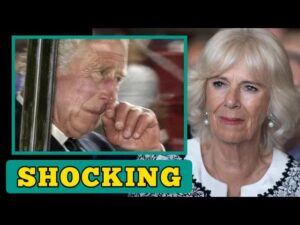A fascinating revelation has recently come to light, shedding new insight into the royal lineage of King Charles III and its unexpected connection to the infamous figure of Dracula.
Delving into the annals of history, it has been uncovered that both King Charles and the late Queen Elizabeth II share a lineage that traces back to Vlad the Impaler, also known as Vlad III, a Romanian prince from the 15th century notorious for his gruesome method of impaling enemies on stakes, earning him the chilling moniker of Vlad the Impaler.
The intricate web of royal connections unfolds further as it is revealed that Vlad III, also known as Vlad Dracula, was the illegitimate son of Vlad II Dracul.
The name “Dracul” translates to “the dragon,” a title bestowed upon Vlad II for his affiliation with the Order of the Dragon.
“Dracula,” meaning “son of Dracul,” became synonymous with Vlad III.
While some speculate that Bram Stoker’s iconic novel “Dracula” drew inspiration from Vlad III, historians lean towards the influence of Romanian vampire folklore rather than direct lineage.
Charles’s ties to Vlad III stem from his ancestry, specifically through Queen Mary, the consort of George V, making him the great-grandson 16 times removed from the infamous prince.
The Prince of Wales himself has acknowledged this historical link, having visited the Carpathian Mountains in Romania and even acquiring and restoring a farmhouse in Transylvania in 2006.
Expressing his attachment to the region, Charles has engaged in charitable endeavors there, emphasizing his personal stake in the country due to his familial heritage.
In a surprising turn of events, the city of Alba Iulia extended an invitation to Charles in 2017, offering him the honorary title of Prince of Transylvania, further solidifying his connection to the region.
Recent social media buzz surrounding the revelation of Charles’s link to Vlad III has garnered widespread attention, with royal enthusiasts expressing astonishment at this newfound historical tie.
Humorous remarks and observations have circulated online, drawing connections between Charles’s portrait and the unfolding narrative of his royal lineage.
Amidst this historical revelation, a poignant display of unity and celebration unfolded in the heart of Britain as King Charles III marked his birthday with a grand military parade.
The event not only showcased the resilience of the monarchy but also served as a symbolic gesture of solidarity, particularly in light of Princess Kate’s public appearance following her battle with cancer earlier in the year.
The balcony appearance at Buckingham Palace witnessed a touching display of familial affection, with Charles openly displaying his admiration and gratitude towards Princess Kate.
Body language expert Judy James noted the genuine bond between Charles and Kate, highlighting their animated conversations and shared laughter, indicative of a supportive and cherished relationship.
As the day culminated in a heartwarming exchange of glances between Kate and Prince William, emotions of love, affection, and gratitude permeated the air, underscoring the strength of their familial ties amidst the backdrop of royal pageantry.
In a subtle yet profound moment, the royal family’s unity and resilience shone through, encapsulating a narrative of strength, support, and unwavering devotion.
As the echoes of history intertwine with the present, the legacy of King Charles III and his unexpected link to Dracula serve as a testament to the enduring tapestry of royal lineage and the unbreakable bonds that define the British monarchy.
